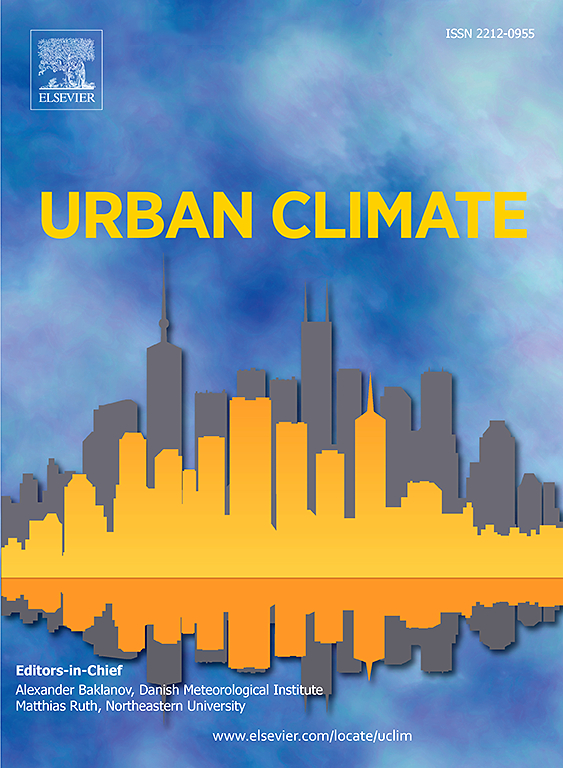提出缓解战略以应对城市化对沙特阿拉伯地表温度动态影响的可解释人工智能模型
IF 6.9
2区 工程技术
Q1 ENVIRONMENTAL SCIENCES
引用次数: 0
摘要
沙特阿拉伯的城市化显著改变了土地利用和土地覆盖(LULC),导致地表温度(LST)动态发生显著变化。利用随机森林(Random Forest)、梯度增强(Gradient Boosting)、XGBoost和LightGBM等优化的机器学习模型,结合可解释人工智能(XAI),分析2002 - 2022年中国地表温度的时空变化及其对地表温度的影响。结果表明:水体完全消失(从99.25 km2减少到0 km2),城市扩张(从1344.38 km2增加到1377.12 km2),稀疏植被减少(从231430.12 km2减少到230454.50 km2)。与此同时,地表温度上升,气温从2018年的25.08℃- 54.42℃上升到2022年的26.08℃- 56.31℃。LightGBM模型的预测精度最高,平均绝对误差(MAE)最低。SHAP分析显示,较高的气溶胶浓度、气温和污染物(CO、NO2、SO2)增加了地表温度,而植被(NDVI)和水体(NDWI)则减缓了地表温度。该研究强调了城市化对地表温度的重大环境影响,并强调了综合环境管理战略的重要性,如增加植被覆盖、优化水资源管理和尽量减少污染,以减轻城市热岛效应,促进沙特阿拉伯的可持续发展。本文章由计算机程序翻译,如有差异,请以英文原文为准。
Explainable artificial intelligence models for proposing mitigation strategies to combat urbanization impact on land surface temperature dynamics in Saudi Arabia
Urbanization in Saudi Arabia has significantly altered land use and land cover (LULC), driving notable changes in land surface temperature (LST) dynamics. This study aims to analyze spatio-temporal LULC changes from 2002 to 2022 and their impact on LST, employing optimized machine learning models like Random Forest, Gradient Boosting, XGBoost, and LightGBM, enhanced by explainable artificial intelligence (XAI). Results show a complete loss of water bodies (from 99.25 km2 to 0 km2), urban expansion (from 1344.38 km2 to 1377.12 km2), and a decline in sparse vegetation (from 231,430.12 km2 to 230,454.50 km2). Concurrently, LST increased, with temperatures rising from 25.08 °C–54.42 °C in 2018 to 26.08 °C–56.31 °C in 2022. The LightGBM model demonstrated the highest predictive accuracy with the lowest mean absolute error (MAE). SHAP analysis revealed that higher aerosol concentrations, air temperatures, and pollutants (CO, NO2, SO2) increase LST, while vegetation (NDVI) and water presence (NDWI) mitigate it. The study emphasizes the significant environmental impact of urbanization on LST and highlights the importance of integrated environmental management strategies, such as enhancing vegetation cover, optimizing water management, and minimizing pollution, to mitigate urban heat island effects and foster sustainable development in Saudi Arabia.
求助全文
通过发布文献求助,成功后即可免费获取论文全文。
去求助
来源期刊

Urban Climate
Social Sciences-Urban Studies
CiteScore
9.70
自引率
9.40%
发文量
286
期刊介绍:
Urban Climate serves the scientific and decision making communities with the publication of research on theory, science and applications relevant to understanding urban climatic conditions and change in relation to their geography and to demographic, socioeconomic, institutional, technological and environmental dynamics and global change. Targeted towards both disciplinary and interdisciplinary audiences, this journal publishes original research papers, comprehensive review articles, book reviews, and short communications on topics including, but not limited to, the following:
Urban meteorology and climate[...]
Urban environmental pollution[...]
Adaptation to global change[...]
Urban economic and social issues[...]
Research Approaches[...]
 求助内容:
求助内容: 应助结果提醒方式:
应助结果提醒方式:


